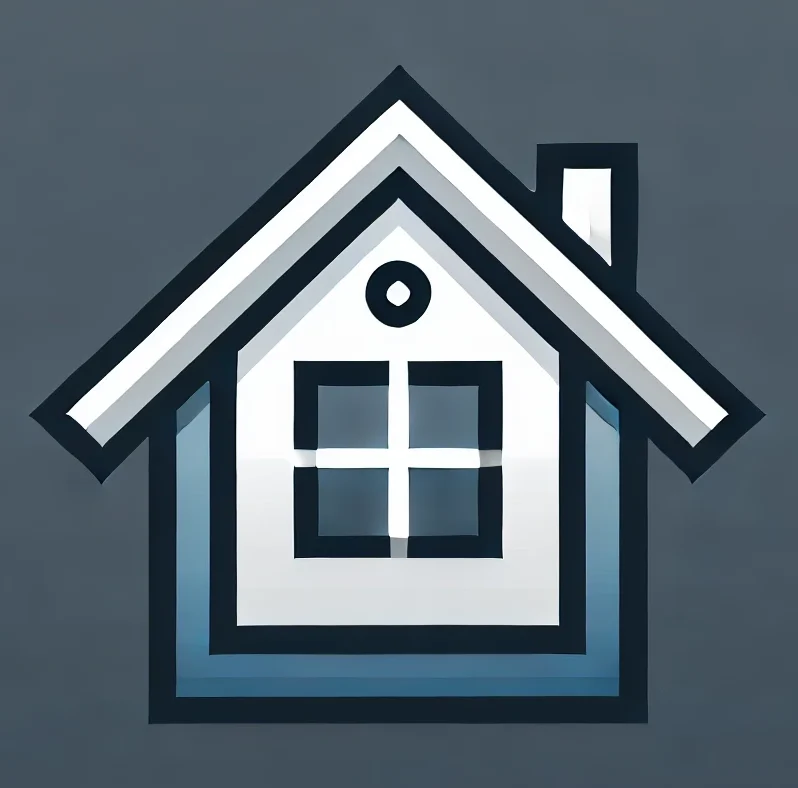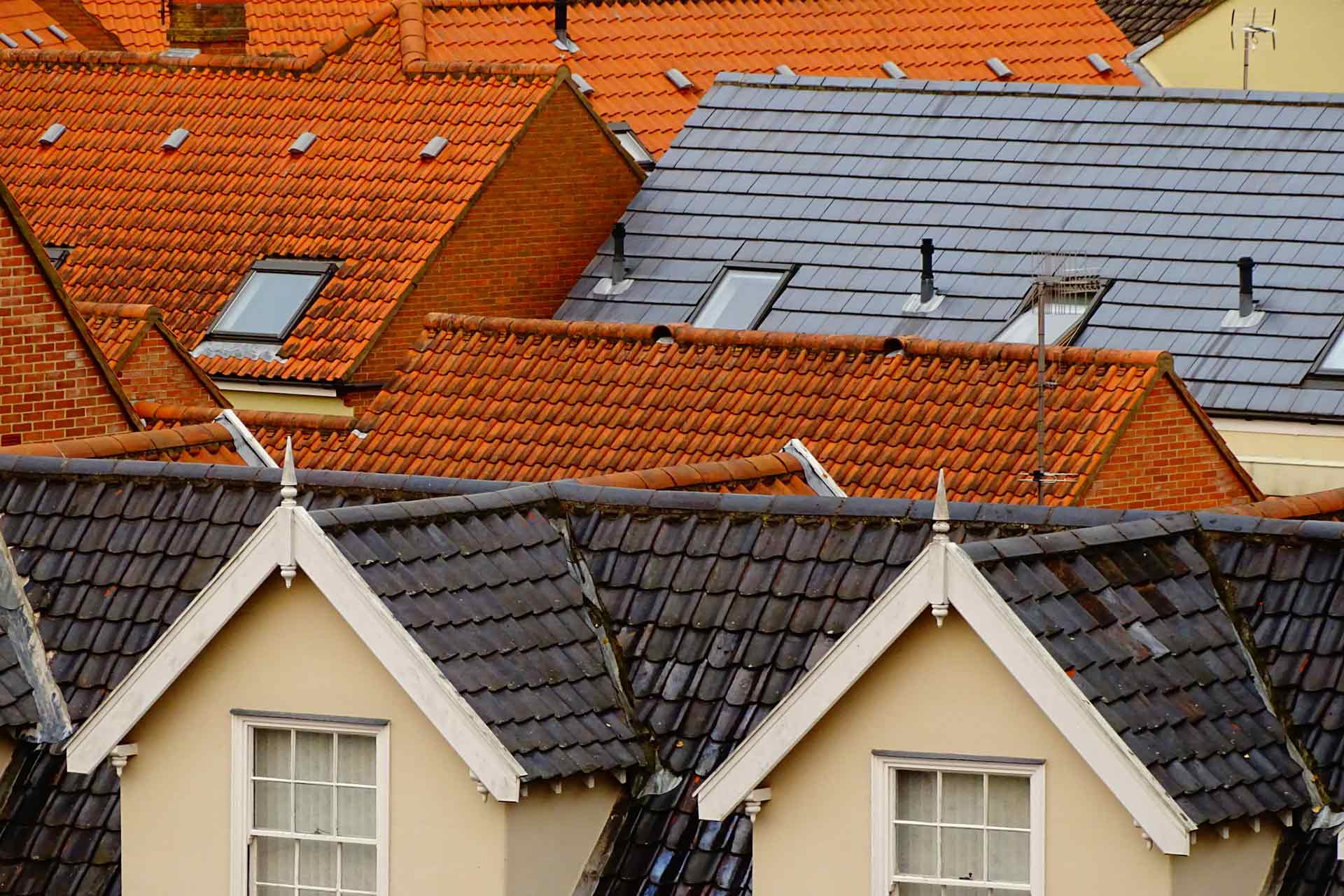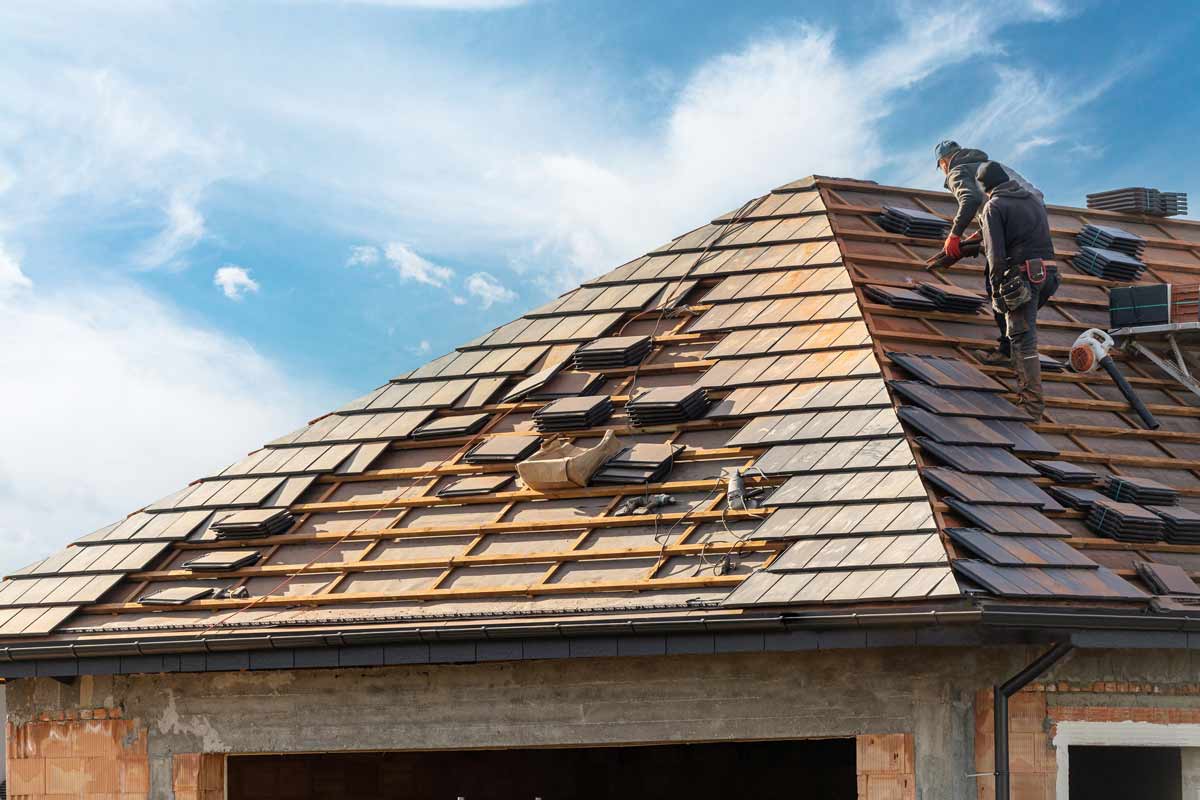Canada’s diverse climate zones present unique challenges when it comes to selecting the right roofing material. From the heavy snowfalls of the north to the rainy West Coast and the humid summers of the south, each region has its own weather patterns that can impact the performance and longevity of your roof. Choosing the best roofing material for your specific climate is crucial to protecting your home and ensuring your roof stands the test of time.

In this guide, we’ll explore the most suitable roofing materials for different Canadian climate zones and how to make the best choice for your home.
1. Asphalt Shingles: Versatile and Affordable

Best For: Most Canadian Regions
Asphalt shingles are the most common roofing material in Canada, known for their affordability, ease of installation, and versatility. These shingles are available in various styles and colors, making them a popular choice for homeowners across different climate zones.
Why They Work:
- Durable and weather-resistant: Asphalt shingles are designed to withstand various weather conditions, including rain, wind, and snow.
- Cost-effective: Asphalt shingles offer a good balance of cost and performance, making them a budget-friendly option.
- Variety of types: You can choose from basic three-tab shingles or upgrade to architectural or laminate shingles for improved durability and aesthetic appeal.
Climate Considerations:
- Cold Climates: In colder regions, such as the Prairies and northern provinces, asphalt shingles perform well against snow and ice. However, it’s important to install them with proper ventilation to prevent ice dams.
- Rainy Climates: On the West Coast, where rainfall is frequent, choose asphalt shingles with algae-resistant coatings to prevent moisture buildup and algae growth.
2. Metal Roofing: Durable and Energy-Efficient
Best For: Cold, Snowy, and Windy Regions
Metal roofing has gained popularity in Canada due to its durability and energy efficiency. Metal roofs are designed to shed snow easily, making them an excellent choice for areas with heavy snowfall. They are also highly resistant to wind, which is ideal for regions prone to strong storms.

Why They Work:
- Long lifespan: Metal roofs can last 50 years or more, making them a long-term investment.
- Excellent snow shedding: In cold and snowy regions, the slick surface of metal roofing helps snow slide off easily, reducing the risk of ice dams.
- Energy efficiency: Metal roofs reflect sunlight, helping to keep homes cooler in the summer and reducing energy costs.
Climate Considerations:
- Snowy Regions: Metal roofs are perfect for provinces like Alberta, British Columbia (especially in the mountains), and the northern territories, where snow accumulation can be a concern. They help prevent the buildup of snow and ice.
- Windy Areas: Metal roofs are also highly resistant to wind damage, making them suitable for regions with high winds or frequent storms, such as parts of the Maritimes.
3. Clay and Concrete Tiles: Long-Lasting but Heavy
Best For: Warm and Dry Climates
Clay and concrete tiles are known for their durability and long lifespan. While they’re more commonly used in warmer, drier climates, they can be adapted for use in certain Canadian regions with moderate temperatures and less intense winter weather.
Why They Work:
- Long-lasting: Clay and concrete tiles can last 50-100 years with proper maintenance.
- Fire-resistant: These materials are naturally fire-resistant, making them ideal for areas where wildfires are a concern.
- Low maintenance: They require little maintenance and are resistant to rot, insects, and moisture.

Climate Considerations:
- Moderate Climates: Clay and concrete tiles are best suited for areas with mild winters and dry summers, such as parts of southern British Columbia. They may not be the best option for regions with heavy snow, as they can be quite heavy and may require extra structural support.
4. Slate Roofing: Premium and Durable
Best For: Areas with Varying Weather Conditions
Slate is a premium roofing material that offers unmatched durability and a timeless aesthetic. It is one of the most durable roofing materials available and can last for more than 100 years with proper care. Slate is highly resistant to extreme weather, making it suitable for many Canadian climates.
Why They Work:
- Extremely durable: Slate can withstand harsh weather conditions, including wind, rain, and snow.
- Low maintenance: Slate roofs require little maintenance over their lifespan, making them a low-maintenance option.
- Aesthetically pleasing: Slate offers a classic, elegant look that enhances curb appeal.
Climate Considerations:
- Varying Climates: Slate is suitable for regions with varied weather conditions, such as southern Ontario and Quebec. It is resistant to the freeze-thaw cycle, which is common in these areas, and can handle both heavy rain and snow.
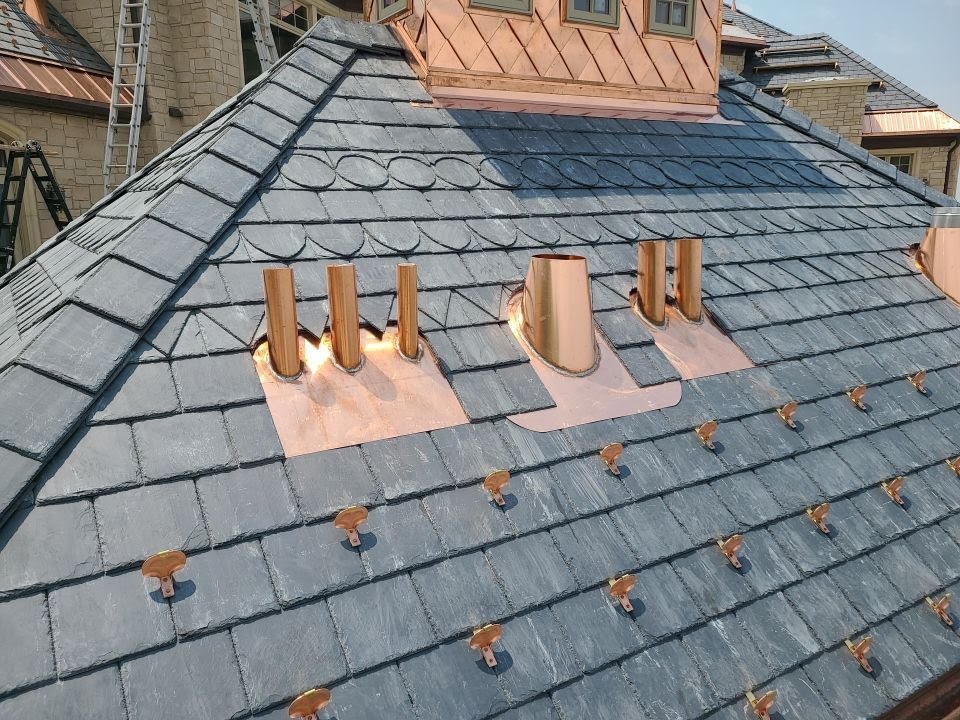
Drawback: Slate is one of the heaviest roofing materials, so ensure your home’s structure can support its weight. It’s also a more expensive option compared to asphalt or metal.
5. Wood Shakes and Shingles: Natural but High Maintenance
Best For: Mild and Coastal Climates
Wood shakes and shingles provide a natural, rustic appearance that appeals to many homeowners. While they can be used in a variety of climates, they are best suited for regions with milder weather, as wood is more susceptible to moisture damage.
Why They Work:
- Natural insulation: Wood offers natural insulating properties, which can help regulate indoor temperatures.
- Aesthetic appeal: Wood shakes and shingles add a beautiful, natural look to homes, particularly in rural or coastal settings.
Climate Considerations:
- Mild Climates: Wood roofing is best suited for areas with mild winters and moderate rainfall, such as coastal British Columbia. However, in areas with heavy rainfall, it’s essential to maintain the wood properly to prevent rot and mold growth.
- Fire-prone areas: Wood roofing is not recommended for areas at risk of wildfires unless treated with fire retardants.
Drawback: Wood roofs require more maintenance than other materials and have a shorter lifespan, typically around 20-30 years.
6. Synthetic Roofing: Versatile and Low Maintenance
Best For: All Climate Zones
Synthetic roofing materials, such as rubber, polymer, or composite shingles, offer the look of natural materials like slate or wood but with improved durability and lower maintenance. These materials are versatile and can perform well in a variety of Canadian climates.
Why They Work:
- Durability: Synthetic materials are resistant to cracking, warping, and rotting, making them a great option for harsh weather conditions.
- Lightweight: They are much lighter than natural materials like slate, which reduces the strain on your home’s structure.
- Low maintenance: Synthetic roofing requires minimal maintenance, and many products are designed to withstand extreme temperatures and weather patterns.
Climate Considerations:
- All Climates: Synthetic roofing materials are designed to withstand a range of weather conditions, from cold winters to hot summers. This makes them an excellent choice for homes in diverse climate zones like southern Ontario, Quebec, and the Prairies.
Drawback: Although synthetic roofing materials are durable and versatile, they can be more expensive than asphalt shingles, though typically less costly than natural materials like slate or clay.
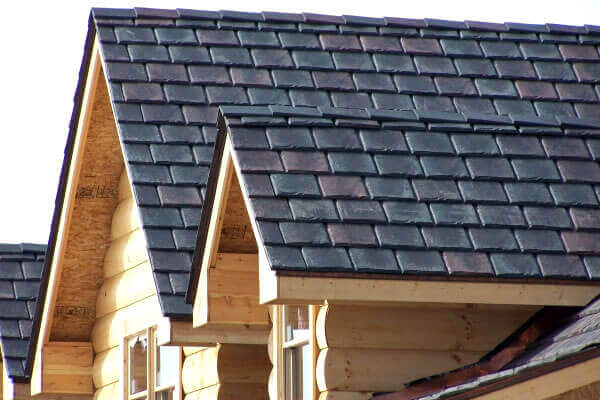
7. Green Roofs: Eco-Friendly and Energy-Efficient
Best For: Urban Areas and Regions with Mild Climates
Green roofs, which involve installing vegetation over a waterproof membrane, are an eco-friendly option that provides insulation and helps manage stormwater runoff. While they require more maintenance than traditional roofs, they offer unique benefits in terms of energy efficiency and sustainability.
Why They Work:
- Natural insulation: Green roofs provide excellent insulation, helping to keep your home cool in the summer and warm in the winter.
- Environmental benefits: They improve air quality, reduce urban heat islands, and provide a habitat for wildlife.
- Stormwater management: Green roofs absorb rainwater, reducing runoff and lowering the risk of flooding in urban areas.
Climate Considerations:
- Urban Areas: Green roofs are ideal for urban areas like Vancouver or Toronto, where they help mitigate the effects of urbanization. They perform best in regions with mild weather, though they can be designed to withstand harsher climates with the right plant selection and waterproofing.
Drawback: Green roofs require regular maintenance to ensure proper drainage and prevent leaks. They also tend to have a higher upfront cost than traditional roofing materials.
Final Thoughts
Choosing the best roofing material for your home depends largely on the climate zone you live in. Whether you’re dealing with heavy snow, intense rain, or varying weather patterns, selecting a roofing material that can withstand your region’s climate is crucial for long-term durability and performance. From the affordability of asphalt shingles to the durability of metal and the eco-friendliness of green roofs, there’s a perfect roofing solution for every Canadian home. Be sure to consult with a local roofing professional to determine the best material for your specific climate and needs.
